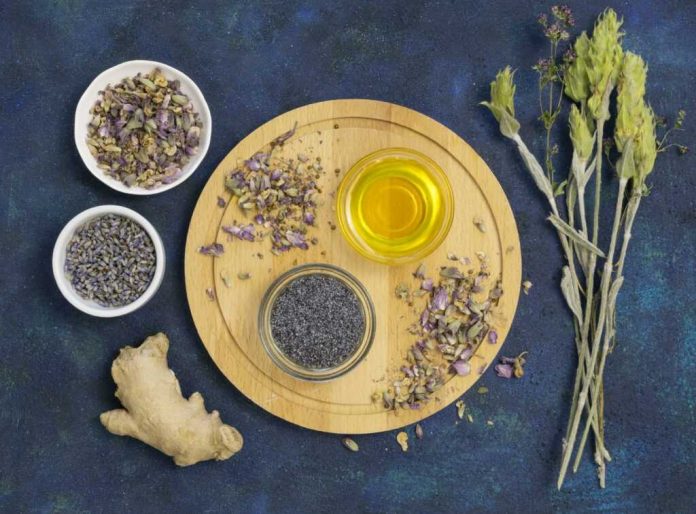Home remedies
See a doctor
What is impetigo?
Impetigo is a bacterial skin infection that most commonly occurs in toddlers and children. However, people of any age can get impetigo via direct contact with an infected person or object.
Impetigo is caused by Staphylococcus aureus and Streptococcus pyogenes bacteria. Infection results in a rash that looks like raised, swollen, itchy, and oozing red sores. The rash typically occurs near the mouth and nose, but it may occur on other areas of the body.
Most cases of impetigo are mild and manageable with a topical antibiotic. However, if not treated, there’s risk that the infection can get worse.
Home remedies for impetigo
Home remedies can help manage your symptoms and aid in the healing process. However, they should be used in addition to antibiotic treatment, not as a replacement.
Most of these home treatments come in the form of purchased products, supplements, or extracts. They aren’t reviewed or regulated by the FDA, which means you can’t know exactly what ingredients, or how much of them, each product contains. So make sure to obtain products only from reputable companies.
1. Aloe vera (Aloe barbadensis)
This African lily plant is a common ingredient for moisturizing skin products. The benefits of aloe vera could also apply to skin infections such as impetigo.
A 2015 study tested aloe extract in a cream alongside neem oil. Results showed activity against Staphylococcus aureus as an antimicrobial when tested in a lab. This is a common bacteria strain that causes impetigo.
Aloe may also counter the dryness and itching of impetigo.
To use this remedy: Applying aloe gel directly from an aloe plant leaf to the skin works best. You can also try an ointment containing a high amount of aloe extract.
2. Chamomile (Matricaria chamomilla/Chamaemelum nobile)
Chamomile can be found in various skin products. It’s used to moisturize the skin and reduce inflammationTrusted Source. A 2011 reviewTrusted Source discussed its use against Staphylococcus, among other medicinal benefits.
A 2014 study showed that chamomile could directly fight skin infections on animals. However, currently there’s no scientific evidence that chamomile helps treat skin infections in humans.
To use this remedy: Make chamomile tea and use it as a skin wash. Or apply a used, cooled chamomile tea bag directly on sores.
3. Garlic (Allium sativum)
Garlic has historically been used to treat bacterial, viral, and fungal infections.
Garlic extracts may suppress both bacteria strains that cause impetigo. One 2011 study showed it had some effectiveness in the lab against Staphylococcus. Another study conducted that year mentioned its effectiveness for Streptococcus strains.
To use this remedy: Place the cut side of a slice of garlic directly on impetigo sores. This may sting a little. You can also press garlic cloves, and then apply topically. Garlic is also great to incorporate into your diet.
Avoid using garlic on young children, as it may cause skin irritation.
4. Ginger (Zingiber officinale)
Ginger is another root with a long history. It’s a seasoning that has health benefits.
Recently, studies have explored its antimicrobial properties. A 2012 study found that some of the components of ginger worked against Staphylococcus.
To use this remedy: Place a slice of ginger, cut side down, on impetigo sores. It might sting a little. You can also juice ginger root and make a poultice from the juice, applying it topically. Incorporating ginger into your diet is another option.
Avoid using ginger on young children, as it may cause skin irritation.
5. Grapefruit seed (Citrus x paradisi)
Grapefruit seed may help manage impetigo. A 2011 studyTrusted Source of grapefruit peel extract showed it had antimicrobial activity against Staphylococcus.
To use this remedy: Grapefruit seed is available in liquid extract or tincture form. Dilute it with water and then apply the mixture topically to impetigo sores — undiluted alcoholic extracts can cause burning sensations on open wounds.
6. Eucalyptus (Eucalyptus globulus)
Eucalyptus is another alternative herbal skin treatment. It’s available in essential oil form. A 2014 study on rats showed it had antimicrobial properties against Staphylococcus. A 2016 lab study found it had inhibitory bioactivity effects on Streptococcus pyogenes.
To use this remedy: Eucalyptus oil should only be used topically. This essential oil has been shown to be toxicTrusted Source, so ingesting it may be dangerous. To use, dilute a few drops of eucalyptus essential oil in water (two to three drops per ounce). Apply this mixture as a topical wash on impetigo sores.
Topical use of properly diluted eucalyptus essential oil is generally safeTrusted Source. Some incidences of contact dermatitis have been reported, but they are rare.
Avoid using eucalyptus oil on very young children, as it may cause dermatitis or skin irritation.
7. Neem (Azadiractha indica)
Neem is an Indian tree closely related to mahogany. Oil extracted from its bark is a popular alternative skin remedy.
Neem is usually used for insect-related skin conditions like those that can result from lice or flea infestation. It also appears to be effective against certain bacteria, including strains that cause impetigo.
One 2011 study showed it had activity against Staphylococcus bacteria. A 2013 study showed similar results against the two strains of bacteria that cause impetigo.
To use this remedy: Follow the label directions provided with a neem oil product.
8. Honey
A delectable sweet, honey has long been used for medicinal purposes. For example, it has traditionally served as an antibacterial. Today, there is scientific support for this health benefit.
A 2016 studyTrusted Source noted honey’s antimicrobial activity, so it’s possible that honey might be an antimicrobial for skin conditions, including impetigo. However, this hasn’t been demonstrated in human studies.
Another 2012 lab study showed it combated Staphylococcus and Streptococcus bacteria quite well.
To use this remedy: Manuka honey and raw honey are two of the most effective choices. Apply either type of honey directly to impetigo sores, and let it sit for 20 minutes. Rinse with warm water.
9. Tea tree (Melaleuca alternifolia)
Today, tea tree is one of the most widely used alternative natural skin treatments.
This includes effectiveness in treating impetigo. In fact, impetigo was named one of many bacterial skin conditions it has been proposed to treat in a major 2017 dissertation review.
To use this remedy: Tea tree is widely available as an essential oil. Dilute a few drops in water (two to three drops per ounce), and apply the solution as a topical wash on impetigo sores.
Avoid using tea tree oil on young children, as it may cause dermatitis or skin irritation.
10. Turmeric (Curcuma longa)
Turmeric is best known as an Asian herbal spice. It also has a history as an anti-inflammatory remedy. Additionally, turmeric boasts antimicrobial properties, even against bacteria that cause impetigo.
One 2016 study found that turmeric could fight Staphylococcus and Streptococcus better than certain herbs.
To use this remedy: Try applying a turmeric poultice directly to impetigo sores. You can do this by mixing water with turmeric powder to make a paste.
11. Usnea (Usnea barbata)
Though less well-known, usnea — a type of lichen — can be topically used for impetigo. Herbal extracts or tinctures of usnea are widely available.
Studies published in 2012 and 2013 discussed usnea’s potency against Staphylococcus and Streptococcus.
To use this remedy: Mix a few drops of usnea extract or tincture with water and apply it topically on impetigo sores. Undiluted extracts may be painful for open wounds.
When to seek medical help
Impetigo is rarely a serious condition. However, it can still spread, become serious, or lead to other health conditions if it isn’t treated properly with antibiotics.
You can try these home remedies for symptom relief and to aid in healing. But you should use them in addition to, not instead of, antibiotics. This is especially true for children, specifically infants. Make sure to follow your doctor’s recommendations closely.
Before you begin using a home remedy, talk to your doctor. If you notice your symptoms becoming worse or you’ve developed other skin irritation, stop using the remedy and talk to your doctor.
If symptoms of cellulitis or kidney problems develop, see your doctor immediately. Although rare, these complications may still be caused by serious cases of impetigo. You’ll also want to see your doctor if impetigo leads to ecthyma — deep pus-filled sores that can be painful.




























